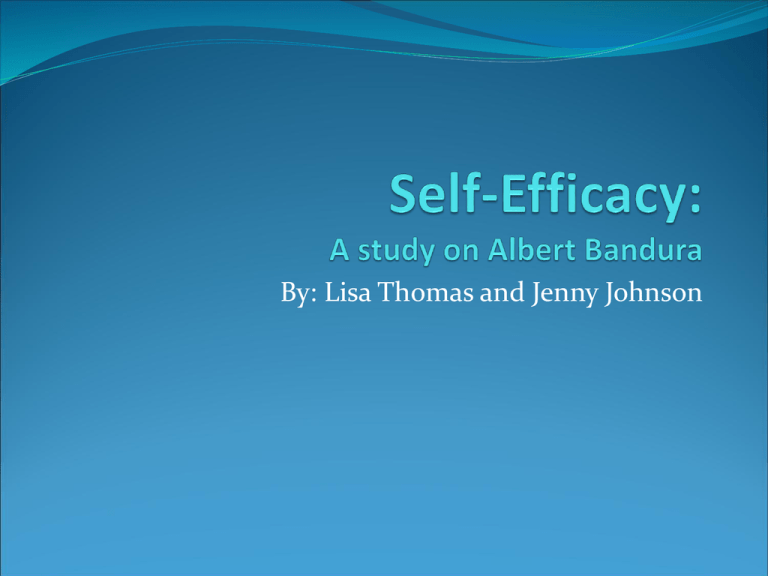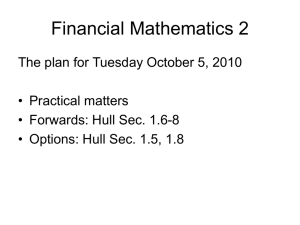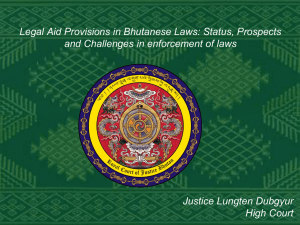Self-Efficacy: A study on Albert Bandura
advertisement

By: Lisa Thomas and Jenny Johnson Biographical Information • Born in 1925 in Alberta, Canada • Grew up in a small town • Attended the U. of British Colombia • Enrolled in an Gen. Psych. Course by • • • • • chance Majored in Psychology and graduated in 1949 Went to graduate school at U. of Iowa and graduated in 1952 In 1953 he taught at Stanford and wrote his first book Adolescent Aggression with Richard Walters In 1974 he was elected President of the American Psychological Association Retired from teaching March 15th 2010. • Social Cognitive Theory provides a large body of verified knowledge about the determinants and psychological mechanisms governing observational learning of behavioral and social competencies, cognitive skills, and emotional propensities. (Bandura, Self-Efficacy) •“Observational Learning” • Bandura believes that we learn a great deal through imitation by observing models and mentally coding what we see. Bandura vs. Skinner Bandura Bandura argues that in social situations we often learn much more rapidly simply through observing behavior of others—more immediate Skinner In Skinner’s theory, learning appears to be a gradual process in which organisms must act to learn—behavior shaped overtime by consequences “Learning would be exceedingly laborious, not to mention hazardous, if people had to rely solely on the effects of their own action to inform them what to do.”—Bandura, 1977 Behaviors Environment Cognitions Attentional Processes: what is selectively observed in the profusion of modeling influences and what information is extracted from ongoing modeled events Retention Processes: an active process of transforming and restructuring information about events for memory representation in the form of rules and conceptions Production Processes: conceptions are translated to appropriate courses of action—when deficits exist, the sub-skills required for complex performances must 1st be developed by modeling and guided enactment Motivation Processes: social cognitive theory distinguishes between acquisition and performance because people do not perform everything they learn—people are more likely to exhibit modeled behavior if it results in valued outcomes than if it has unrewarding or punishing effects (Bandura, Self-Efficacy) Bobo Doll Experiment Bandura wanted to prove that behavior such as aggression is learned through observing and imitating others People who view aggression in society (consciously or unconsciously) think that the behavior is acceptable for them to imitate Observation Group A: Watched an adult hitting doll with a mallet Group B: Watched an adult play nicely with the doll Results Group A: In playroom, children battered the doll with mallet Group B: In playroom, children played nicely with doll “Beliefs in one’s capabilities to organize and execute the courses of action required to produce given attainments” —Bandura , Self-Efficacy •Plays a major role in how one approaches goals, tasks, and challenges •Center of Bandura’s Social Cognitive Theory The Difference Between Self-Efficacy & Self-Esteem __________________________________________________ Often used interchangeably as though they represent the same phenomenon, when in fact they refer to entirely different things. Self-Efficacy: concerned with judgments of personal capabilities Example: “I’m going to make this free-throw shot.” Self-Esteem: concerned with judgment of self-worth Example: “I’m a terrible person.” “There is no fixed relationship between beliefs about one’s capabilities and whether one likes or dislikes oneself.” (Bandura, Self-Efficacy) Sources of Self-Efficacy Appraisals Actual Performance: efficacy perceived through performance experiences. Success builds a strong belief in one’s personal efficacy, and failure undermines it. Bandura believes this to be the most influential source of knowledge 2. Vicarious Experiences: appraising one’s capabilities in relation to the attainment of others 3. Verbal Persuasion: easier to sustain a sense of efficacy, especially when struggling with difficulties, if significant others express faith in one’s capabilities than if they convey doubts 4. Psychological Cues: In judging their capabilities, people rely partly on somatic information conveyed by physiological and emotional states. (Bandura, Self-Efficacy) 1. Is verbal persuasion or a child’s actual performance the most influential source of a child’s self-efficacy appraisal? If verbal persuasion is most effective, does it matter whether it is positive or negative in regard to the effect it has on the child’s recorded running time? To what degree do vicarious experiences affect the child’s self-efficacy appraisal. Hypothesis Since society today focuses primarily on encouraging students through verbal persuasion, this study will attempt to disprove Bandura’s conclusion about actual performance as the most effective source by proving verbal persuasion, negative or positive, to be the most influential source. •17 kids (9 boys and 8 girls) •Age range: 6-17 years old We divided the kids into 4 groups: actual performance, vicarious experience, negative verbal persuasion, and positive verbal persuasion—leaving out psychological cues. 2. Each child observed the measured distance of about 100 feet and predicted how long it would take he or she to run it. 3. After implementing the different sources of self-efficacy appraisal in each group and we then asked for a second prediction from the child. 4. Then depending on the group, after the child ran, he or she gave a third prediction 1. Actual Performance Group Name Age 1st Prediction 1st Run 2nd Prediction 2nd Run Joseph 11 years 15 seconds 9 seconds 9 seconds 9 seconds Grace 9 years 45 seconds 14 seconds 20 seconds 15 seconds Ryan 9 years 10 seconds 10 seconds 10 seconds 10 seconds James 16 years 13 seconds 9 seconds 7 seconds 8 seconds Actual Performance Vicarious Experience Group Name A g e 1st Prediction Revised 1st Run prediction 3rd Prediction 2nd Run Mariella 6 20 sec. 12 sec. 11 sec. 12 sec. 12 sec. Will 6 15 sec. 10 sec. 12 sec. 12 sec. 11 sec. Michaela 7 20 sec. 12 sec. 12 sec. 12 sec. 12 sec. Kieran 9 20 sec. 12 sec. 11 sec. 11 sec. 11 sec. Beth 8 10 sec. 10 sec. 13 sec. 12 sec. 12 sec. Vicarious Experience Verbal Persuasion (Positive) Group Name A 1st Prediction g e Revised Prediction 1st Run 3rd Prediction 2nd Run Lochlan 7 60 sec. 40 sec. 11 sec. 10 sec. 12 sec. Martin 6 13 sec. 10 sec. 13 sec. 1o sec. 13 sec. Erin 12 11 sec. 9 sec. 9 sec. 9 sec. 9 sec. Claire 17 12 sec. 10 sec. 8 sec. 9 sec. 9 sec. Verbal Persuasion-Positive Verbal Persuasion (Negative) Group Name A g e 1st Prediction Revised Prediction 1st Run 3rd Prediction 2nd Run Rose Mary 7 10 sec. 13 sec. 10 sec. 10 sec. 11 sec. Rachel 10 10 sec. 10 sec. 10 sec. 10 sec. 11 sec. Brandon 11 10 sec. 9 sec. 9 sec. 9 sec. Jeff 12 8 sec. 8 sec. 9 sec. 9 sec. 9 sec. 10 sec. Verbal Persuasion-Negative Which has the most Influence? 1st Prediction 2nd Prediction Difference Actual Performance 21 seconds 12 seconds 9 seconds Vicarious Experience 17 seconds 11 seconds 6 seconds Verbal PersuasionPositive 24 seconds 17 seconds 7 seconds Verbal PersuasionNegative 10 seconds 10 seconds 0 seconds Comparing st 1 Runs Influences of Self- Efficacy 1st Runs Actual Performance 11 seconds Vicarious Experience 12 seconds Verbal Persuasion- Positive 10 seconds Verbal Persuasion- Negative 10 seconds Told ya so! Our Conclusion: Bandura was Right! Our Conclusion Through our testing we found our hypothesis to be INCORRECT: Like Bandura, our test results proved actual performance to be the most influential source of selfefficacy appraisal Negative and positive verbal persuasion had the same effect on the child’s running time Vicarious experience was the 3rd most influential source of self-efficacy appraisal. •Not have parents present •Do it in a even more controlled setting •Focus more on gender and age •Make sure that the kids are not sharing scores between groups •Include “Physiological Cues” Does gender matter when using different sources of self-efficacy appraisal? How does age affect the child’s selfefficacy appraisals? Further Questions Bandura Nature Nurture Locke Piaget Rousseau It’s appealing to imagine children making their own discoveries and creating their own ideas. In reality, however, children’s minds are structured by the environment, by the models and the social training practices the environment provides (Bandura, 1977) Thank you for your time! Hope you have a Happy Easter!








